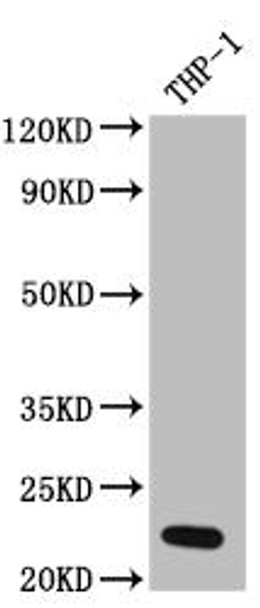| UniProt Protein Function: | IL23A: Associates with IL12B to form the IL-23 interleukin, a heterodimeric cytokine which functions in innate and adaptive immunity. IL-23 may constitute with IL-17 an acute response to infection in peripheral tissues. IL-23 binds to a heterodimeric receptor complex composed of IL12RB1 and IL23R, activates the Jak- Stat signaling cascade, stimulates memory rather than naive T- cells and promotes production of proinflammatory cytokines. IL-23 induces autoimmune inflammation and thus may be responsible for autoimmune inflammatory diseases and may be important for tumorigenesis. Belongs to the IL-6 superfamily. Protein type: Secreted, signal peptide; Cytokine; Secreted Chromosomal Location of Human Ortholog: 12q13.3 Molecular Function: cytokine activity; interleukin-23 receptor binding; protein binding Biological Process: defense response to Gram-negative bacterium; defense response to virus; inflammatory response; innate immune response; negative regulation of interleukin-10 production; positive regulation of activated T cell proliferation; positive regulation of defense response to virus by host; positive regulation of granulocyte macrophage colony-stimulating factor production; positive regulation of inflammatory response; positive regulation of interferon-gamma production; positive regulation of interleukin-10 production; positive regulation of interleukin-12 production; positive regulation of interleukin-17 production; positive regulation of memory T cell differentiation; positive regulation of natural killer cell activation; positive regulation of natural killer cell proliferation; positive regulation of NF-kappaB import into nucleus; positive regulation of NK T cell activation; positive regulation of NK T cell proliferation; positive regulation of osteoclast differentiation; positive regulation of T cell mediated cytotoxicity; positive regulation of T cell proliferation; positive regulation of T-helper 1 type immune response; positive regulation of tissue remodeling; positive regulation of transcription from RNA polymerase II promoter; positive regulation of tumor necrosis factor production; positive regulation of tyrosine phosphorylation of Stat3 protein; positive regulation of tyrosine phosphorylation of Stat4 protein; positive regulation of tyrosine phosphorylation of Stat5 protein; regulation of tyrosine phosphorylation of Stat1 protein; T cell proliferation; tissue remodeling |
| UniProt Protein Details: | |
| NCBI Summary: | This gene encodes a subunit of the heterodimeric cytokine interleukin 23 (IL23). IL23 is composed of this protein and the p40 subunit of interleukin 12 (IL12B). The receptor of IL23 is formed by the beta 1 subunit of IL12 (IL12RB1) and an IL23 specific subunit, IL23R. Both IL23 and IL12 can activate the transcription activator STAT4, and stimulate the production of interferon-gamma (IFNG). In contrast to IL12, which acts mainly on naive CD4(+) T cells, IL23 preferentially acts on memory CD4(+) T cells. [provided by RefSeq, Jul 2008] |
| UniProt Code: | Q9NPF7 |
| NCBI GenInfo Identifier: | 74761641 |
| NCBI Gene ID: | 51561 |
| NCBI Accession: | Q9NPF7.1 |
| UniProt Secondary Accession: | Q9NPF7,Q6NZ80, Q6NZ82, Q9H2A5 |
| UniProt Related Accession: | Q9NPF7 |
| Molecular Weight: | 20,730 Da |
| NCBI Full Name: | Interleukin-23 subunit alpha |
| NCBI Synonym Full Names: | interleukin 23 subunit alpha |
| NCBI Official Symbol: | IL23A |
| NCBI Official Synonym Symbols: | P19; SGRF; IL-23; IL-23A; IL23P19 |
| NCBI Protein Information: | interleukin-23 subunit alpha |
| UniProt Protein Name: | Interleukin-23 subunit alpha |
| UniProt Synonym Protein Names: | Interleukin-23 subunit p19; IL-23p19 |
| Protein Family: | Interleukin |
| UniProt Gene Name: | IL23A |
| UniProt Entry Name: | IL23A_HUMAN |







